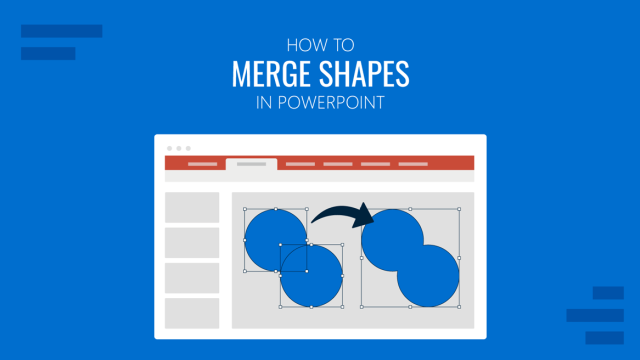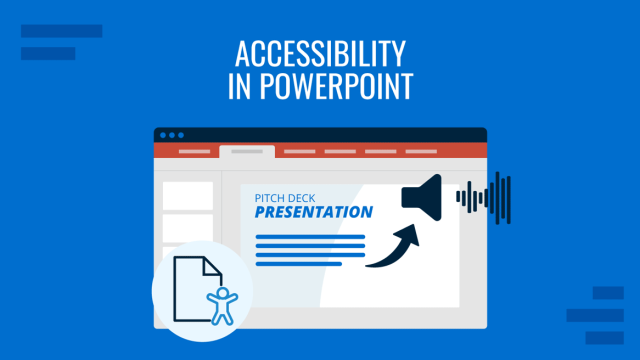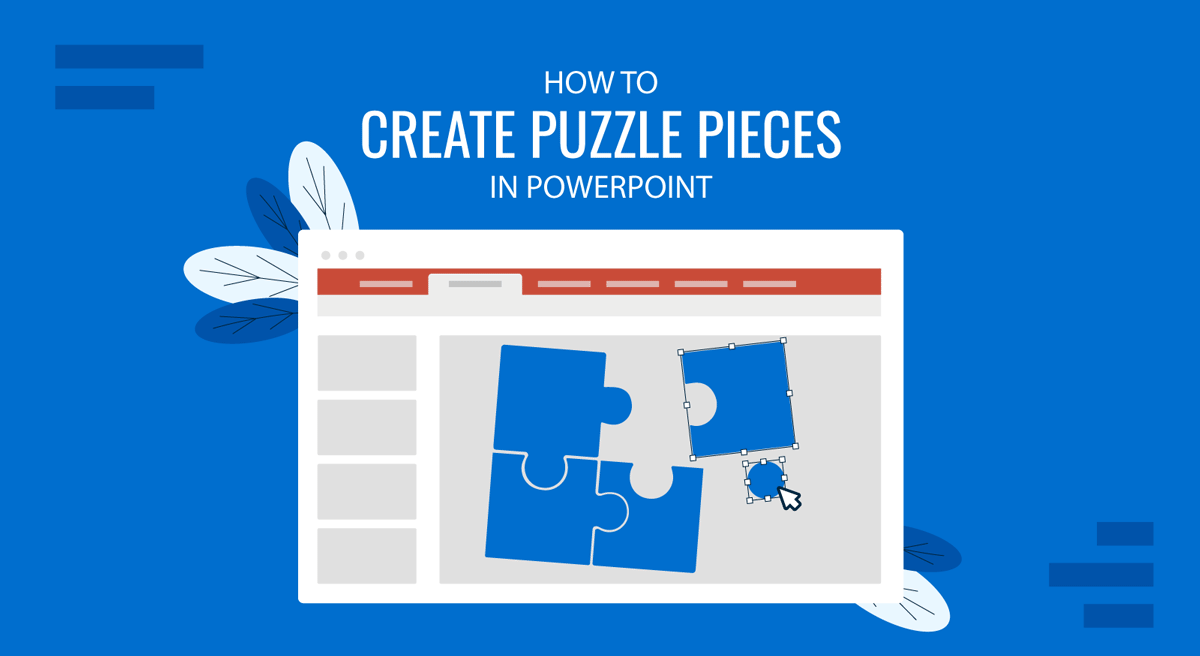
Puzzle pieces represent some of the most visually engaging elements that you can have in a PowerPoint presentation. Puzzle pieces can be used to symbolically represent different topics and answer the question of how to start a presentation or end a presentation by using them to make your slides stand out. Other than using puzzle PowerPoint templates, there are different methods by which you can create puzzle pieces in PowerPoint.
How to Make Puzzle Pieces in PowerPoint
Different PowerPoint shapes can be used to create puzzle pieces for PowerPoint. However, we believe that process to be time-consuming, leading to unprofessional results due to lack of design experience, and overall, not easy to customize. For this very reason, today’s tutorial will focus on working with SlideModel free puzzle pieces PPT templates, and you can choose between two styles: the free puzzle diagram PowerPoint & Google Slides template, or the free flat jigsaw puzzle PowerPoint template.
You can download any of these free puzzle PPT templates by entering your email in the free download section on the template landing page.
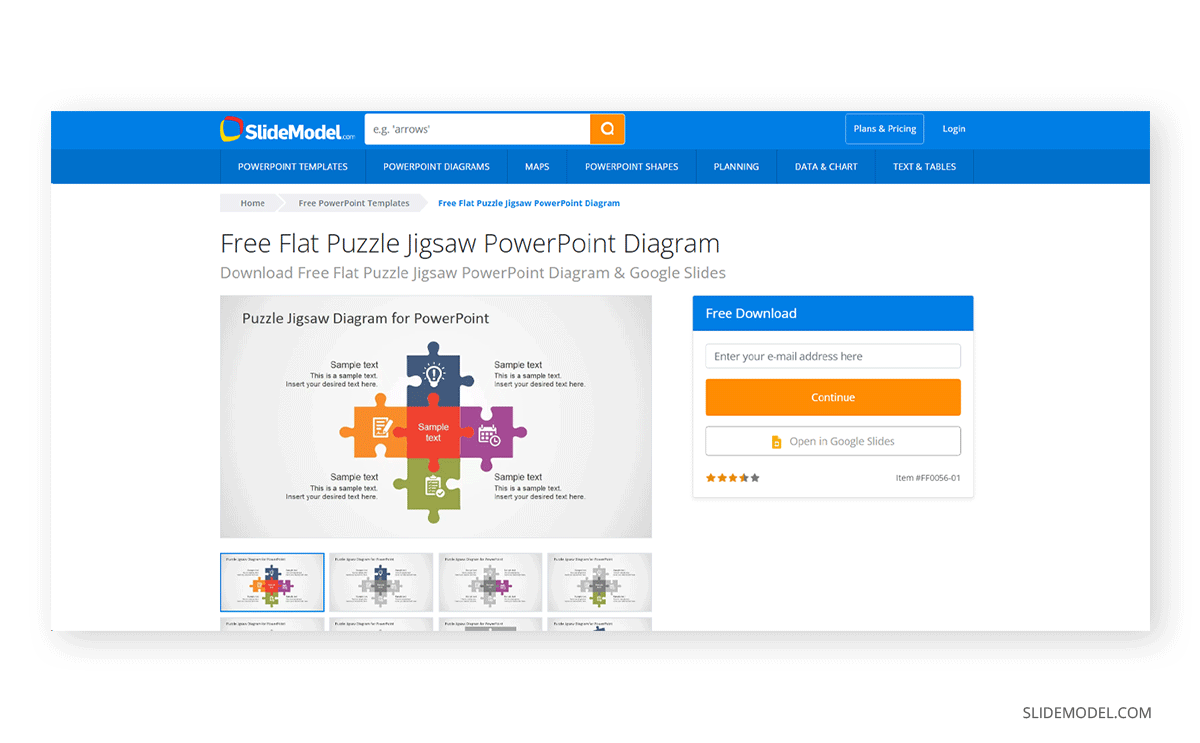
As SlideModel templates are made from editable PowerPoint shapes, you can consider these templates as time savers that you can customize as much as you prefer. Start by clicking Enable Editing to make the template file editable; then, we can rearrange, reposition, or change properties like size, color, etc.
The first step is defining what we intend from these puzzle pieces. Currently, the free jigsaw puzzle template for PowerPoint has a central piece surrounded by four puzzle diagram pieces. Inside each puzzle shape, we find either icons or placeholder text areas.
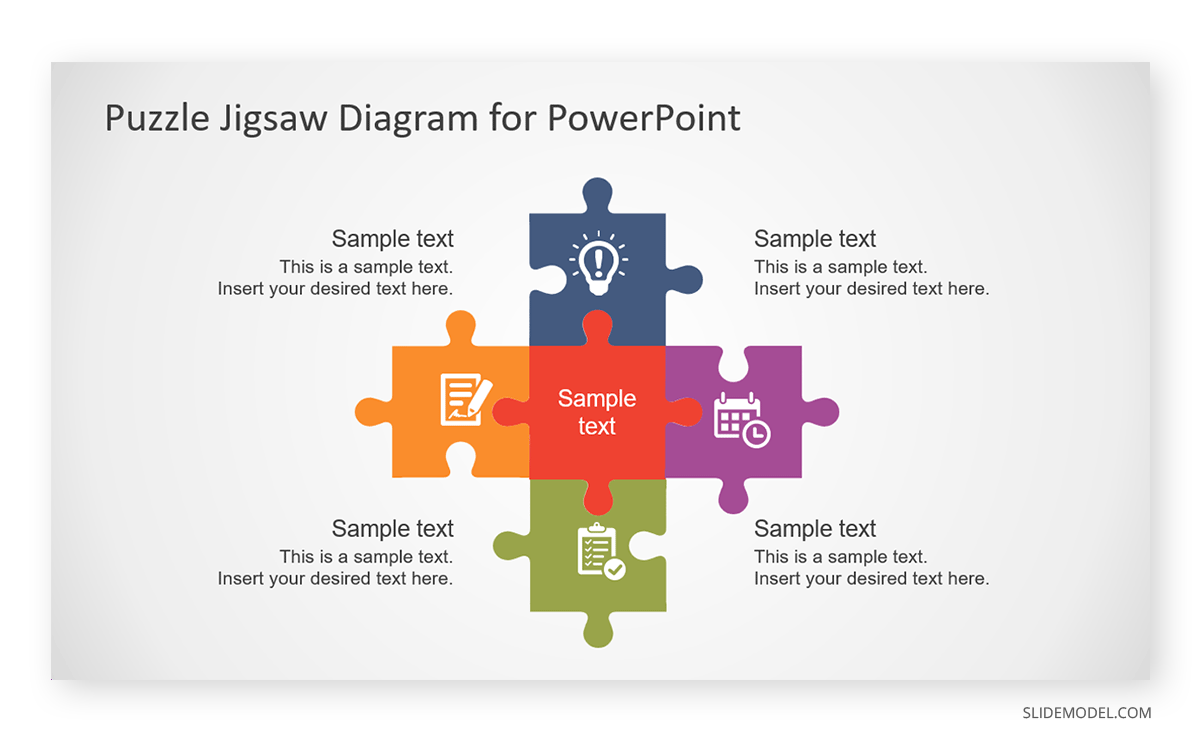
Let’s say our presentation requires us to stick to a monochromatic theme and arrange the pieces horizontally. We’ll start by removing the elements from the central figure and pressing Shift to displace them along the horizontal axis. Remember to pick both the puzzle piece and the icon.
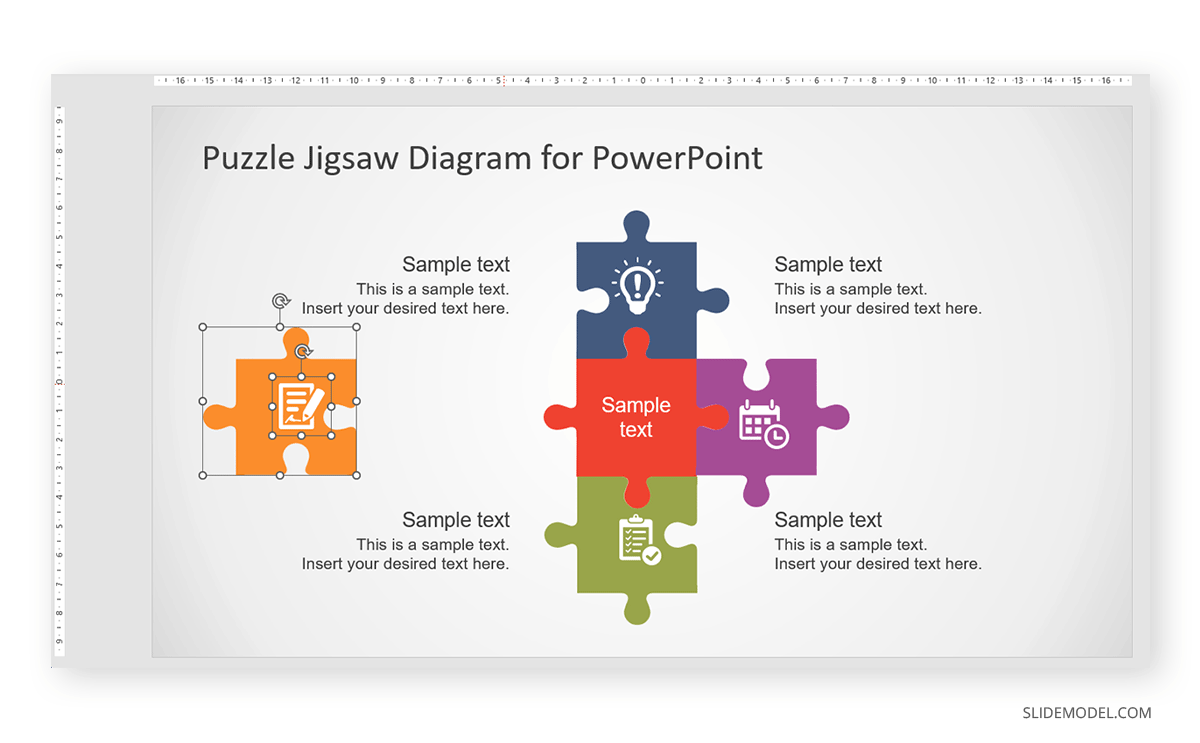
The grid line guides can help you acknowledge if a puzzle piece from another area is properly aligned to your current axis.
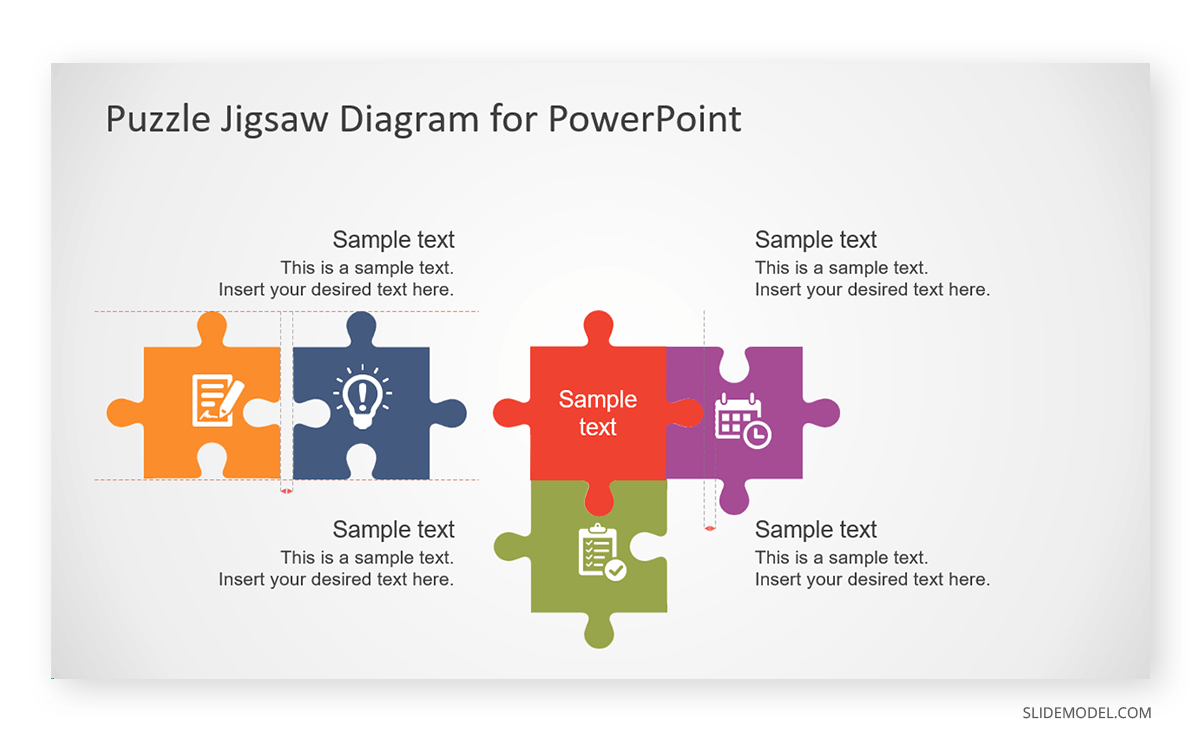
The rotation handle helps us to turn the puzzle pieces and re-arrange them to any desired position we have. The result should look like this once all puzzle pieces are aligned.
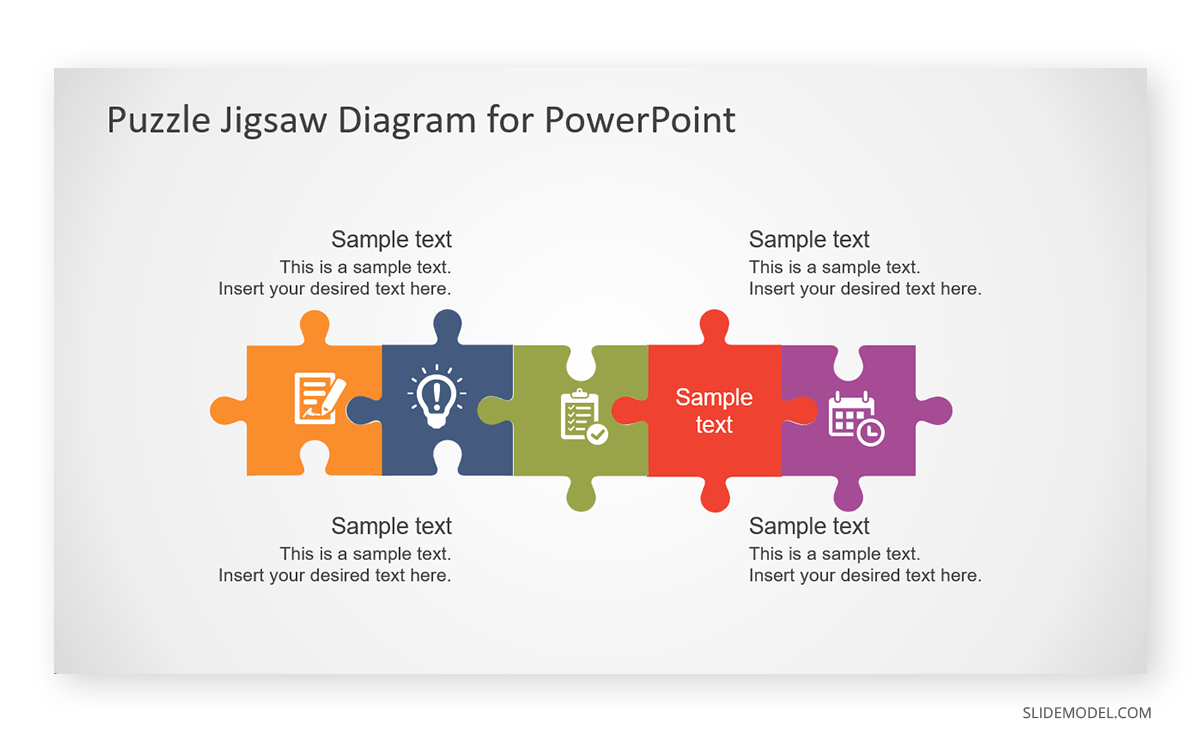
What we need to do now is to replace the colors used for these puzzle jigsaws. To accomplish that, we click on a puzzle piece and locate the Shape Format in the Ribbon. Once that’s activated, in the new tool range shown in the Ribbon, select Shape Fill and change the color to whichever choice you prefer. We’re going to work with a turquoise-based scheme to comply with this company’s branding.
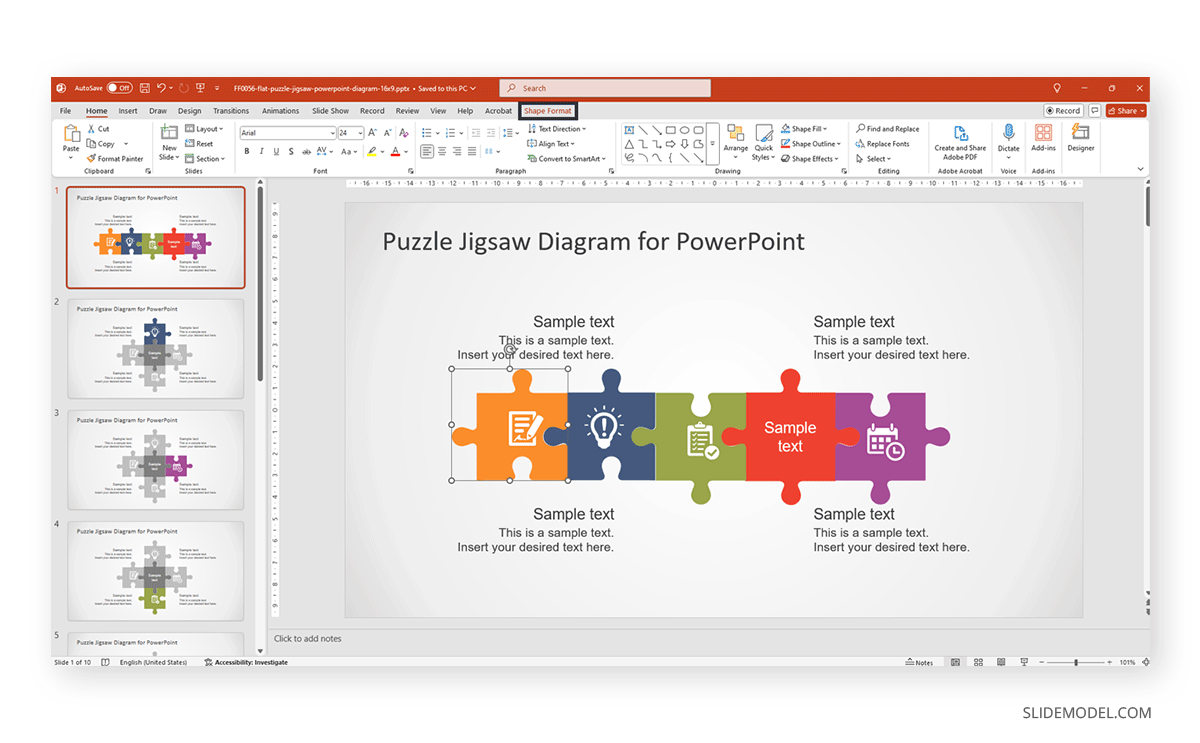
Go piece by piece, changing the color, but also ensure that contrast is appropriate between the puzzle pieces, the background color, the text, and the icons inside the puzzle.
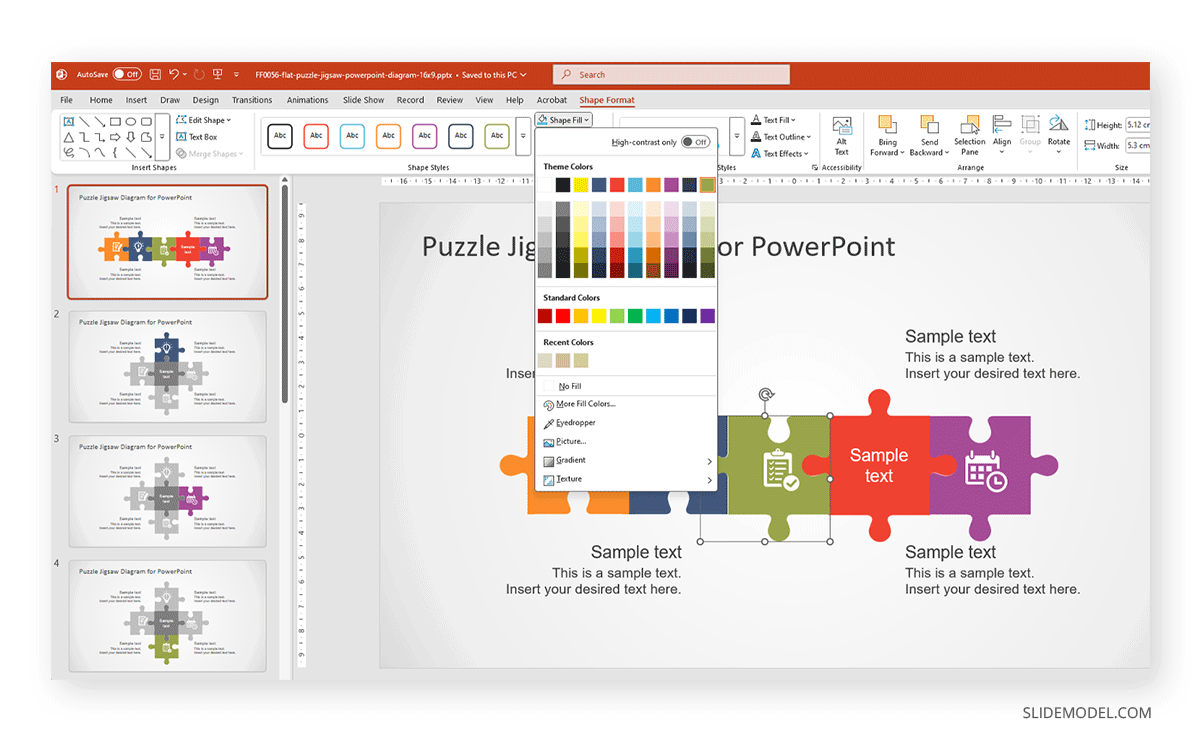
Change colors accordingly so we can ensure readability.
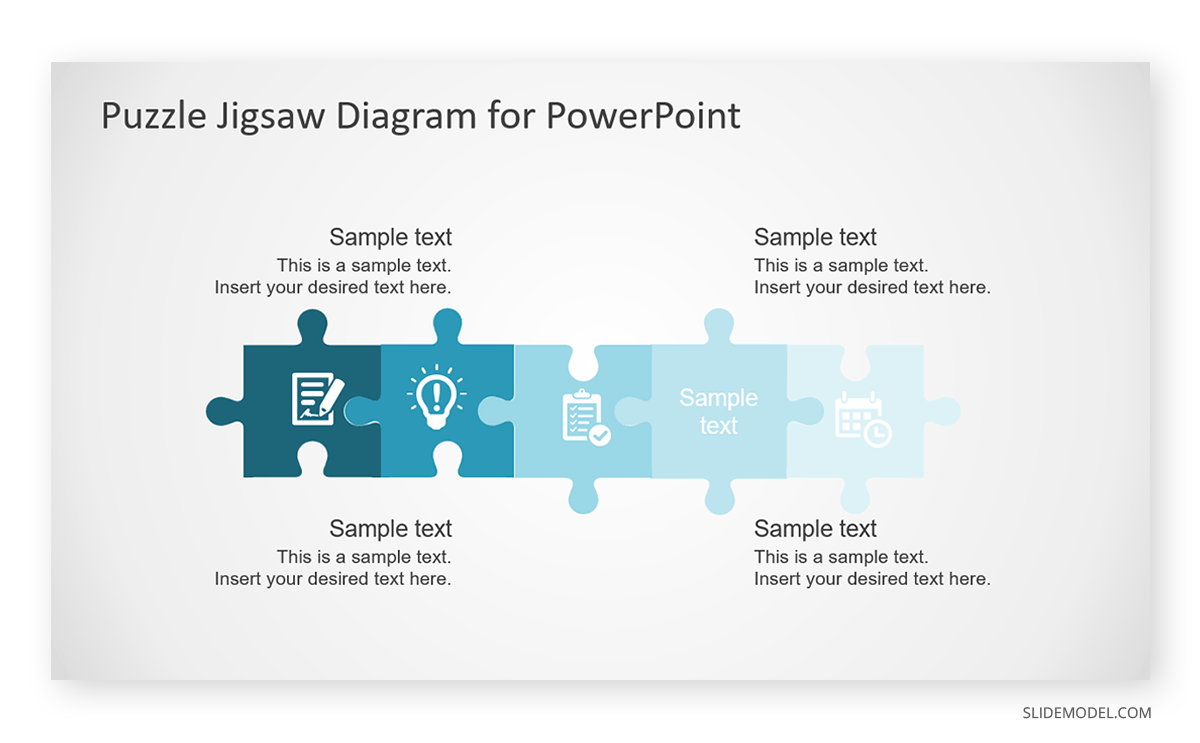
As we can see, this slide still needs to fill the title area and placeholder text, and the color scheme needs to be adjusted for better readability. We’ll follow up on those changes, then right-click and select Format Background to alter the background color.
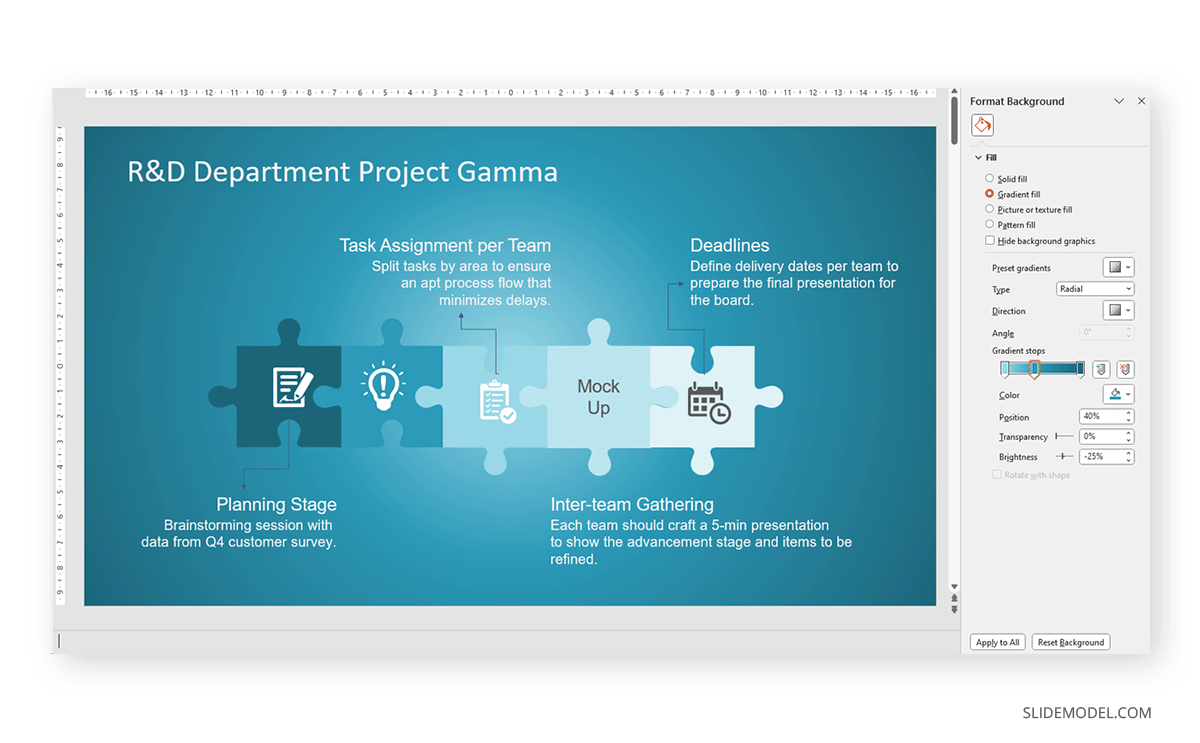
Callout arrows can be used to link the puzzle pieces to the placeholder text areas. And as simple as that is how do you make a jigsaw puzzle in PowerPoint.
How to Manually Create Puzzle Pieces in PowerPoint
If you want to learn the step-by-step process of how to create puzzle pieces with PowerPoint shapes, follow these instructions.
To get started, go to Insert -> Shapes and select a rectangle shape. Insert multiple rectangle shapes or duplicate one of the added shapes to create standard-sized rectangle shapes to add to your slide.
Add circular shapes to both rectangles via Insert -> Shapes in the next step. You can use different circular shapes, including an oval shape or a circular connector from the flowchart shapes. However, ensure that your added shapes remain consistent throughout the design. For example, you should use only one circular shape type for the puzzle.
Recolor one of the shapes to differentiate it from the other set. You can recolor shapes by selecting them and going to Shape Format -> Shape Fill.
Select the rectangle and circular shape and go to Shape Format -> Merge Shapes -> Union to create puzzle pieces.
How to Make Jigsaw Puzzle from Individual Pieces in PowerPoint
In case your intent is to recreate the jigsaw puzzle we did above but with native PowerPoint shapes, follow these instructions.
Add rectangle and circular shapes in your slide and color circles separately to create a jigsaw puzzle from individual pieces created in the case above. Add as many pieces as you need.
Use drag and drop to combine the shapes, and where circular shapes remain behind a triangle, select them to bring forward using the Bring to Front option from the right-click context menu.
Add all the shapes in the same way until you have a complete set of circular and rectangle shapes, which are used as jigsaw puzzle pieces.
Select the shapes and go to Shape Format -> Merge Shapes -> Union to combine the circular and rectangle shapes to create a jigsaw puzzle.
Once one set is complete, add additional rectangle shapes to expand the jigsaw puzzle. Add circular shapes to further design your jigsaw puzzle.
You can optionally give a unique color to the jigsaw puzzle pieces by recoloring the circles. These circles will take the shape of the entire piece once combined.
Select the second set of jigsaw puzzle shapes added to the design via Shape Format -> Merge Shapes -> Union. Once your jigsaw puzzle set is complete, you can recolor the rectangle shapes to complete your design.
How to Create Removable Puzzle Pieces in PowerPoint
While making a puzzle in PowerPoint using shapes is easy enough, you can create removable puzzle pieces to add more flexibility to your jigsaw puzzle designs. In the example below, we will separate the jigsaw puzzle pieces created in the above example.
Select the jigsaw puzzle shapes you wish to separate in the first step. Go to Shape Format -> Merge Shapes -> Subtract to minus some jigsaw puzzle shapes.
Once subtracted, you can use drag and drop to separate the puzzle pieces and use them like real puzzle pieces when designing PowerPoint slides.
How to Extract Different Shapes to Create Puzzle Pieces in PowerPoint
Another method for creating puzzle pieces in PowerPoint is to extract one shape from another to create unique-looking designs using different shapes in PowerPoint.
To get started, add a shape in PowerPoint. In this example, we added the rectangle shape via Insert -> Shapes.
Once one shape is added, insert an overlay shape on top of the first shape. In the next step, select both shapes added to the slide and combine them via Shape Format -> Merge Shapes -> Combine.
Since the original overlay shape will merge with the base shape, you need to add an identical shape (in this case, the plaque shape) to the slide.
Drag and drop the second shape to the exact size of the missing piece. You can place the newly added duplicate shape in the empty area to resize it or use the Shape Format tab to define a specific height and width.
Recolor to differentiate the two shapes. Just select the shape and recolor it via Shape Format -> Shape Fill. You now have easily distinguishable puzzle pieces, where you can separate puzzle piece shapes according to need.
FAQs
Can you create puzzle pieces in PowerPoint?
Yes, you can create puzzle pieces in PowerPoint by merging PowerPoint Shapes such as rectangles and circular shapes.
How do you make a jigsaw puzzle in PowerPoint?
You can create a jigsaw puzzle in PowerPoint by adding rectangle shapes with oval shapes at the edges and combining them via Shape Format -> Merge Shapes -> Union.
Can I add text or images to the puzzle pieces in PowerPoint?
Yes, you can add text to puzzle pieces in PowerPoint by adding a text box inside or around the puzzle pieces via the Insert tab.
Can I use a template to create puzzle-themed PowerPoint presentations?
Yes, there are different jigsaw puzzle templates for PowerPoint, such as the ones available at SlideModel, that can enable you to create puzzle-themed PowerPoint presentations.
Final Words
When wondering how to make a presentation stand out, you should use slide elements that might be attention-grabbing yet elegant. By merging PowerPoint Shapes and using readymade PowerPoint templates, you can get unique and visually engaging puzzle layouts that perfectly fit your needs with options to customize colors, size, and textures and transform complex ideas into interactive and memorable visuals.
Whether starting from scratch or using PowerPoint templates, the process is rewarding and impactful. It allows you to engage your audience and communicate your message effectively with the visual aid of the symbolism of a missing piece. Such symbolism can make the audience ponder your topic more than basic slide visuals.
